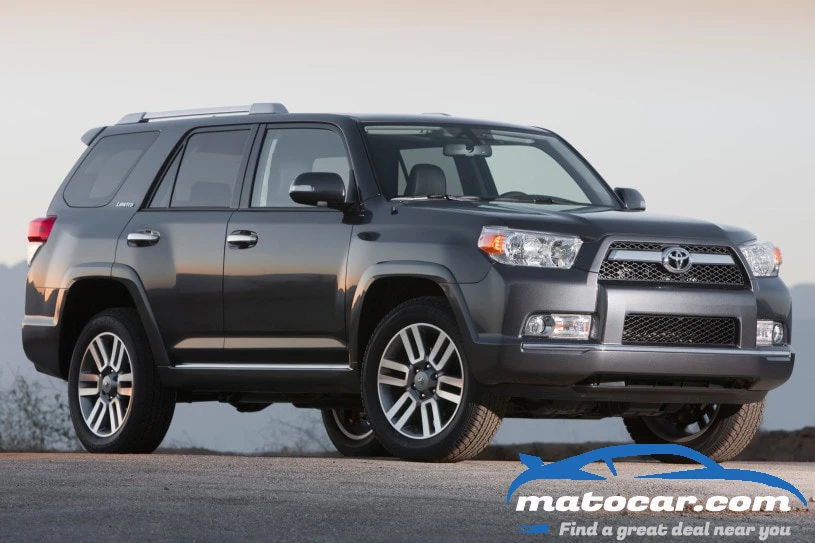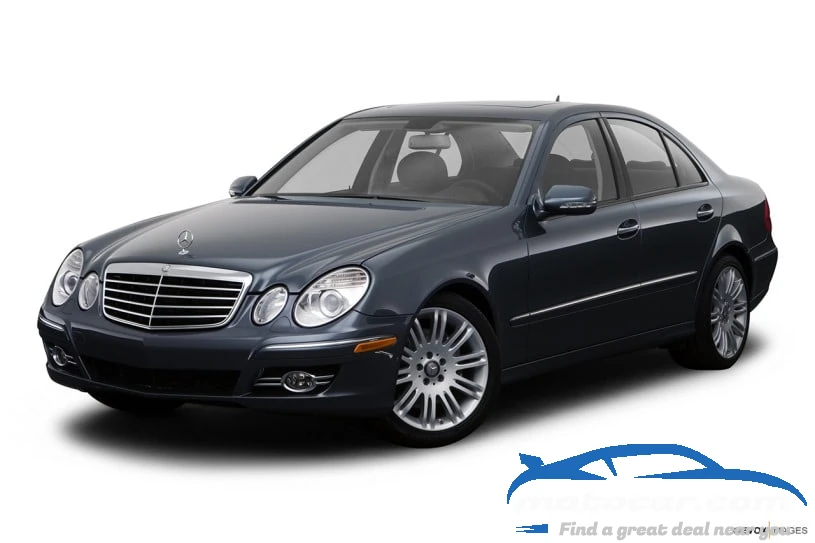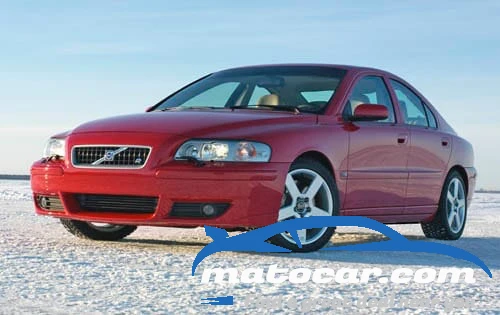Toyota 4Runner 2013 Review Prices , and Pictures
10.0/10
Based on 1 reviewsMSRP range: $30,590 - $35,990
- Outstanding off-road capability
- pleasant on-road demeanor
- strong V6 engine
- ample cargo capacity.
- Some disappointing interior materials
- no V8 option
- cramped third-row seat.
For the relatively few drivers who require an all-conquering all-terrain SUV, the 2013 Toyota 4Runner is a top choice.
Vehicle overview
In every crowd there's always a contrarian who ignores the conventional wisdom and stubbornly goes his own way. In the midsize SUV segment, that would be the 2013 Toyota 4Runner.
In an era when virtually all of its competitors have made the switch to kinder, gentler car-based platforms, the midsize 4Runner has remained true to its rugged roots. Though much has changed in the nearly 30 years since its introduction, the 4Runner retains the traditional body-on-frame underpinnings that give it a robust off-road capability that's increasingly hard to find.
Just because its basic layout remains the same, however, that doesn't mean the 4Runner is some kind of four-wheeled anachronism. Its 270-horsepower V6 engine has more than enough guts to keep up with the latest generation of car-based crossovers while still returning decent fuel economy numbers. It has a roomy interior with plenty of cargo space and the potential to carry seven passengers. And as if to prove this is no old-school SUV, it has a number of high-tech features including an emergency telematics system and Toyota's Entune electronics interface.
Yet there's plenty of old-school off-roader here, too. The 4Runner's two different four-wheel-drive systems with low range and locking center and/or rear differentials give it the ability to go where most of its competitors rightly fear to tread. There's also the KDSS dynamic suspension system that features electronically disconnecting sway bars for improved wheel travel, and Crawl Control that allows the driver to concentrate on choosing the correct line through tough off-pavement sections while the computer takes charge of the throttle and brake.
While the 4Runner has a number of points in its favor, it's not right for everybody. Buyers looking for similar off-road capability with more guts under the hood will want to check out the V8-powered 2013 Jeep Grand Cherokee, which also offers a more upscale interior.
And if you're one of the many SUV buyers who aren't likely to venture very far off the pavement, you'll want to consider some of those car-based crossover SUVs. Top choices would include the 2013 Nissan Pathfinder and Toyota's own Highlander. Still, the 2013 Toyota 4Runner offers something that's downright uncommon these days, namely the ability for those folks who don't like to follow the crowd to blaze their own trail.
2013 Toyota 4Runner models
The 2013 Toyota 4Runner is a midsize SUV offered in three trim levels: SR5, Trail and Limited. The SR5 and Limited are available with two-wheel drive or four-wheel drive, while the Trail model is offered with four-wheel drive only. Five-passenger seating is standard but a 50/50-split third-row seat is available and raises capacity to seven.
The entry-level SR5 comes standard with 17-inch alloy wheels, skid plates, hill-start assist and hill descent control, foglights, heated mirrors, rear privacy glass, a power-lowering liftgate window, a windshield wiper de-icer, keyless entry, cruise control, air-conditioning with second-row vents, cloth upholstery, a height-adjustable driver seat (with power lumbar adjustment), a tilt-and-telescoping steering wheel, 40/20/40-split-folding and reclining rear seats, a trip computer, Bluetooth phone and audio connectivity and an eight-speaker sound system with a CD player, satellite radio, an auxiliary audio jack and an iPod/USB audio interface.
The Trail model adds off-road-oriented tires, extensive off-roading mechanical elements, mud guards, black exterior trim, a sunroof, power front seats (eight-way driver, four-way passenger), water-resistant cloth upholstery, a rearview camera, a sliding rear cargo floor, upgraded gauges and two 120-volt household power outlets. The Trail can be equipped with the optional KDSS off-road suspension.
The Limited includes the Trail's interior upgrades plus 20-inch alloy wheels, adaptive suspension, automatic headlights, keyless ignition/entry, dual-zone automatic climate control, leather upholstery, heated front seats, a leather-wrapped steering wheel, HD radio, a touchscreen audio interface and Toyota's Entune smartphone integration system.
Many of the features found on the 4Runner Trail and Limited models are available as options on the lower trim levels, though specifics will vary based on the region of the United States in which you live. Other option highlights include a voice-activated navigation system and automatically deploying/retracting running boards (not available on Trail).
MatoCar Latest Toyota 4Runner NewsThis Is Our Best Look Yet at Toyota's EV Pickup2013 Highlights
For 2013, the Toyota 4Runner returns with no significant changes.Performance & mpg
The 2013 Toyota 4Runner comes standard with a 4.0-liter V6 engine that produces 270 hp and 278 pound-feet of torque. A five-speed automatic is the only available transmission.
Rear-wheel drive is standard on SR5 and Limited models. The SR5 trim level can also be had with an available part-time four-wheel-drive system with low range, while the Limited offers optional full-time four-wheel drive with a lockable center differential. The Trail model comes standard with the part-time low-range-equipped four-wheel-drive system and includes a locking rear differential and selectable electronic terrain-sensitive systems. Regardless of model or drivetrain, the 4Runner's towing capacity is rated at 5,000 pounds.
In MatoCar instrumented testing, a rear-drive 4Runner SR5 accelerated from a standstill to 60 mph in 7.2 seconds (8.2 seconds for a four-wheel-drive Trail model), which is about average among competing SUVs. The EPA estimates fuel economy at 17 mpg city/23 mpg highway and 19 mpg combined for a rear-wheel-drive 4Runner, which is also average in this segment. With four-wheel drive, those numbers drop to 17/21/18.
Safety
Standard safety features on the 2013 Toyota 4Runner include antilock disc brakes, stability and traction control, front-seat side airbags, full-length side curtain airbags, front knee airbags and active front head restraints. The Limited comes with the Safety Connect emergency communications system, which includes automatic collision notification, a stolen-vehicle locator and roadside assistance.
In MatoCar brake testing, a rear-wheel-drive 4Runner SR5 came to a stop from 60 mph in 122 feet, which is average among SUVs in its class. However, a Trail model with its off-road-oriented tires consumed 140 feet to come to a standstill.
In government crash tests the 4Runner earned an overall rating of four stars (out of a possible five) along with four stars in frontal crash protection and five stars in side impact protection. The Insurance Institute for Highway Safety awarded the 4Runner its top rating of "Good" for both frontal-offset and side-impact protection and a second best "Acceptable" in the roof strength test.
Driving
From behind the steering wheel the 2013 Toyota 4Runner displays a level of refinement you might not expect from a truck-based SUV. The V6 engine is strong enough that it's unlikely the lack of a V8 option will be an issue for most buyers. The ride is also smooth and well-controlled, with hardly a trace of the bounciness once common to vehicles with this level of off-road capability.
On the pavement, the 4Runner's handling is not particularly impressive. The steering feels less communicative than we'd like, but its light effort works well in both slow-speed parking lot maneuvers and off-road, where it results in reduced kickback on gnarly trails. Speaking of its performance in the dirt, the 4Runner is one of the best in its class, especially if it's the Trail model equipped with Toyota's KDSS suspension system, which allows for a greater range of wheel travel.
Interior
The 2013 Toyota 4Runner offers an interior that's as straightforward as the rest of the vehicle. Its utilitarian DNA can be seen in the expanses of hard plastics (or maybe it's just penny pinching), but either way, key points of contact at least get some welcome padding. Controls are simple and easy to use, though the large climate controls knobs don't feel very substantial. Toyota's Entune system, which is standard on Limited models and available as an option on both the SR5 and Trail, integrates with the driver's smartphone to enable the use of handy apps like Pandora or OpenTable through the dash's touchscreen interface.
As for passenger accommodations, the standard five-person seating arrangement includes a reclining 40/20/40-split-folding second-row seat. The available third-row seat bumps capacity to seven passengers, but is cramped enough that no one over the age of about 14 will want to spend much time there.
There's a healthy 47 cubic feet of cargo room behind the second-row seats, a number that jumps to an even healthier 90 cubic feet with all the rear seats folded down. That's about the same as crossovers like the Ford Explorer and Nissan Pathfinder. The cargo hold also has a couple of clever features including a sliding rear cargo floor with a 440-pound capacity and a Party Mode that shifts the audio system's output to the speakers in the liftgate to provide tunes for tailgate parties.
Rate the car
You may also like
0 Comments









